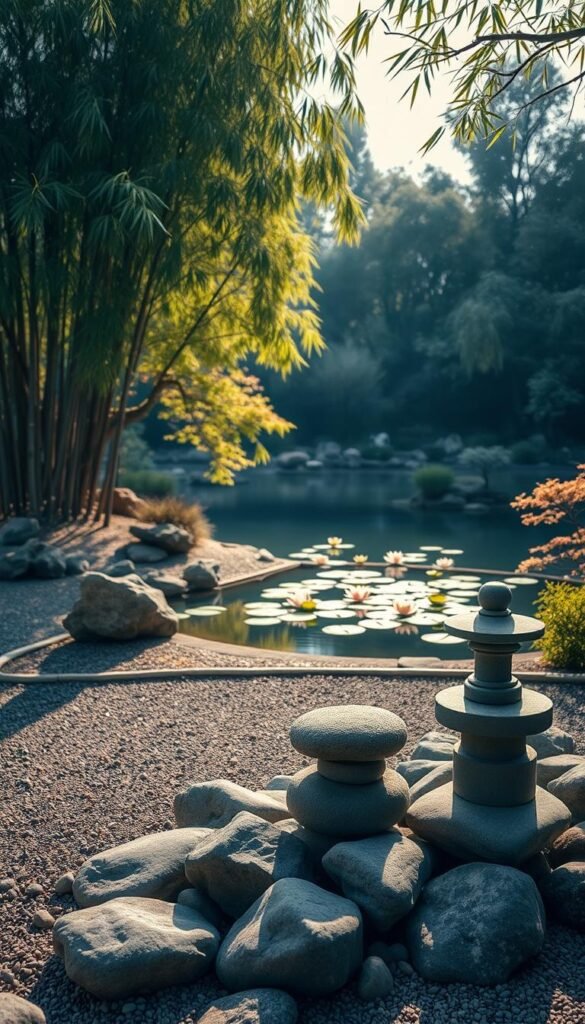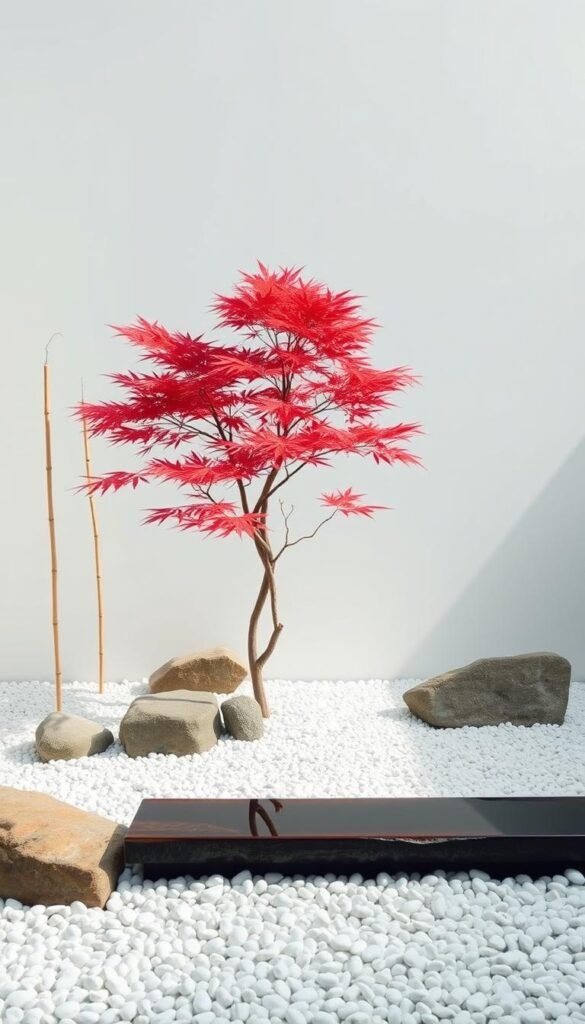Imagine stepping into a peaceful retreat where clean lines and natural textures work together to calm your senses. This is the magic of blending minimalist design with organic elements—a trend reshaping outdoor spaces into personal sanctuaries. By combining Scandinavian practicality with Japanese-inspired details, you can craft an environment that feels both fresh and timeless.
At its core, this approach focuses on balance. Smooth wooden benches might sit beside rugged stone pathways, while airy bamboo screens frame clusters of lush greenery. Every choice serves a purpose—whether it’s the soothing sound of a small fountain or the visual rhythm of raked gravel patterns. Even negative space plays a role, giving your eyes room to rest amid the carefully arranged features.
You don’t need acres of land to create this effect. Compact urban corners can become meditative oases through clever use of vertical planters or container gardens. Sustainable materials like reclaimed wood and native stones keep maintenance low while honoring nature’s beauty. For those seeking inspiration, exploring DIY garden art offers creative ways to add personality without clutter.
The result? A living canvas that evolves with the seasons, inviting you to slow down and reconnect. Whether you’re sipping morning coffee or practicing evening reflection, this style transforms ordinary areas into soul-nourishing escapes. It’s not just about aesthetics—it’s about crafting spaces that support both relaxation and joyful everyday moments.
Understanding the Essence of a Zen Garden

The heart of a tranquil retreat lies in its ability to weave purposeful elements into a cohesive story. At its core, this style isn’t just about arranging rocks or plants—it’s a philosophy that transforms ordinary spaces into living sanctuaries.
The Philosophy Behind Minimalism and Nature
Every detail matters. Five foundational components shape these serene gardens:
- Rocks (symbolizing stability and mountains)
- Water (inviting movement and calm)
- Plants (chosen for simplicity and texture)
- Space (the “ma” that lets designs breathe)
- Symbolic features (like bamboo screens or stone lanterns)
Scandinavian practicality meets Japanese restraint here. Think clean lines in wooden decks contrasting with rugged stone pathways—harmony through contrast.
How Zen Principles Inspire Outdoor Serenity
True balance emerges when every choice serves both aesthetics and intention. A raked gravel pattern isn’t just decorative—it invites contemplation. Similarly, the sound of trickling water shifts your focus inward.
This approach thrives on intentional emptiness. By leaving room between features, you create pauses that amplify beauty. As one designer notes: “A garden’s silence speaks louder than its stones.”
Modern Zen Garden Backyard Transformations: Minimalism Meets Nature
Your journey to a calming retreat starts by evaluating your current setup. Whether you’re working with a cozy balcony or a sprawling yard, thoughtful planning turns any area into a restorative escape. Begin by mapping sunlight patterns and existing natural elements—like trees or slopes—that shape your design possibilities.
Assessing Your Space and Vision
Measure your outdoor space and note its unique features. Could a weathered wall become a backdrop for climbing plants? Might uneven ground inspire a tiered gravel layout? For compact areas, vertical planters or slim bamboo screens maximize greenery without clutter. Consider blending textures—smooth stone pavers beside feathery grasses—to create visual harmony.
Setting Clear Goals for Your Backyard Retreat
Define your priorities: Is this a meditation nook or a place for quiet gatherings? Choose materials that age gracefully, like cedar or rust-resistant metal. Add personality through DIY projects or repurposed items for rustic charm. Remember, simplicity reigns—a single water feature or strategically placed rocks can anchor your sanctuary’s atmosphere.
By aligning your vision with practical design principles, you’ll craft a timeless haven. Need inspiration? Explore how upcycled treasures can add character while honoring nature’s quiet beauty.






